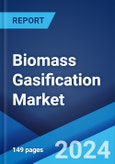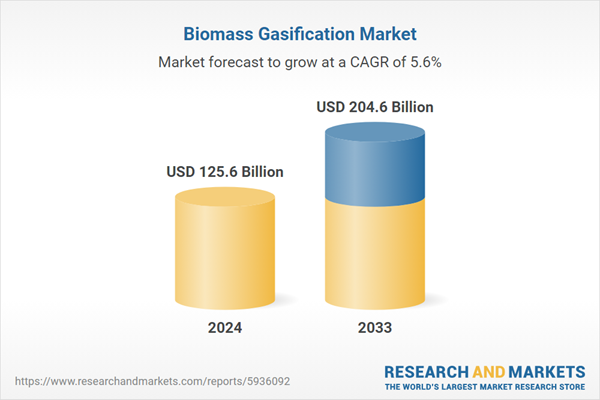Biomass gasification refers to a technology pathway that utilizes a controlled process to transform biomass into hydrogen and carbon monoxide (CO) by using oxygen, heat, carbon dioxide (CO2) and steam. The energy released through the process can be used for preparing food, generating electricity, heating and transportation. As compared to traditional gas-powered systems, biomass gasifiers offer an optimum decentralized energy source at an affordable cost. Other than this, the integration of biomass gasification with steam and gas turbines offers an efficient, clean and modern biomass system for the production of electricity and heat. The rapid depletion of fossil fuels and the abundant availability of biomass is currently driving the market toward growth.
Biomass Gasification Market Trends
The Increasing rural electrification rate, particularly in developing countries, has escalated the demand for decentralized electricity generation, which is majorly driving the global biomass gasification market toward growth. Besides this, the widespread acceptance of these systems for waste processing as a replacement of conventional techniques, such as incineration and landfill, is further fueling the market growth. Moreover, the leading market players and governments of various nations have been consistently investing in the development of advanced technologies, which is contributing to the market growth. For instance, the United States Depart of Energy (USDOE) is developing innovative and flexible modular designs through the Gasification Systems Program. This aids in the conversion of different types of US domestic coal blends, waste plastics, and municipal solid waste (MSW) into clean synthesis gas. Furthermore, the rising development and commercialization of small- to large-scale biomass gasification systems combined with power generation equipment is positively influencing the market across the globe.Market Segmentation
This report provides an analysis of the key trends in each sub-segment of the global biomass gasification market report, along with forecasts at the global and regional level from 2025-2033. The report has categorized the market based on source.Breakup by Source
- Solid Biomass
- Biogas
- Municipal Waste
- Liquid Biomass
Breakup by Region
- North America
- Europe
- Asia Pacific
- Latin America
- Middle East and Africa
Competitive Landscape
The competitive landscape of the industry has also been examined along with the profiles of the key players.
Key Questions Answered in This Report
1. What is the market size for the global biomass gasification market?2. What is the global biomass gasification market growth?
3. What are the global biomass gasification market drivers?
4. What are the key industry trends in the global biomass gasification market?
5. What is the impact of COVID-19 on the global biomass gasification market?
6. What is the global biomass gasification market breakup by source?
7. What are the major regions in the global biomass gasification market?
Table of Contents
Table Information
| Report Attribute | Details |
|---|---|
| No. of Pages | 138 |
| Published | February 2025 |
| Forecast Period | 2024 - 2033 |
| Estimated Market Value ( USD | $ 125.6 Billion |
| Forecasted Market Value ( USD | $ 204.6 Billion |
| Compound Annual Growth Rate | 5.6% |
| Regions Covered | Global |









